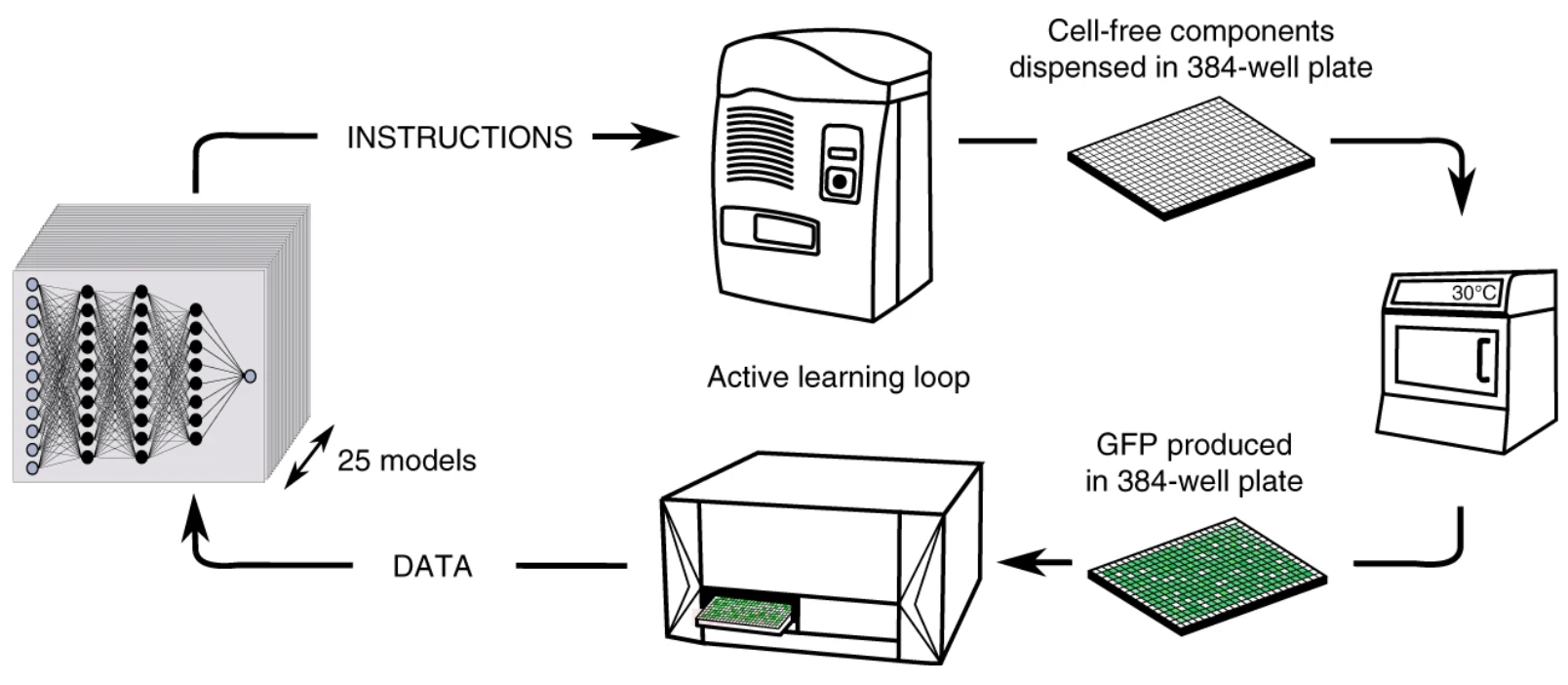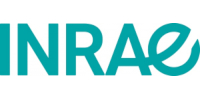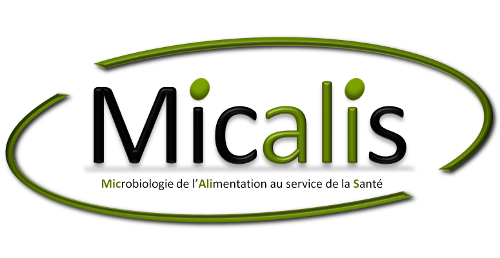Large scale active-learning-guided exploration for in vitro protein production optimization, Nature Communications
Cell-free lysates are a major platform for in vitro protein production but batch-to-batch variation makes production difficult to predict. A research team from the Micalis institute, in collaboration with the Chemogenomic and Biological Screening Core Facility of the Institut Pasteur, developed an active learning approach to optimize buffer conditions to bring home-made lysates up to commercial production potential.
Active learning along with reinforcement learning (the method used by Google-DeepMind with the AlphaGo game) is a technique particularly well suited to explore large combinatorial spaces and quickly find optimum. Here the technique was used to explore more than 4 million cell-free buffer compositions. Buffer compositions were automatically sampled by a liquid handling robot, productivity was measured using a plate reader, measurements were used to feed neural network models to identifying critical parameters involved in cell-free productivity and generate instructions for the robot to pick new compositions for the next cycle round. Fewer than 10 iterations were sufficient to increase productivity by 34 fold.
Ultimately, the active learning process enabled the team to develop a simple one-step method to achieve high quality predictions for protein production using minimal experimental effort regardless of the lysate quality. Their method can be used for many lysates and many proteins including the bioproduction of therapeutic proteins.
Article: Borkowski O, Koch M, Zettor A, Pandi A, Cardoso Batista A, Soudier P & Faulon JL. Large scale active-learning-guided exploration for in vitro protein production optimization. Nature Communications, 11(1): 1872, 2020. | doi: 10.1038/s41467-020-15798-5 | PMID: 32312991




